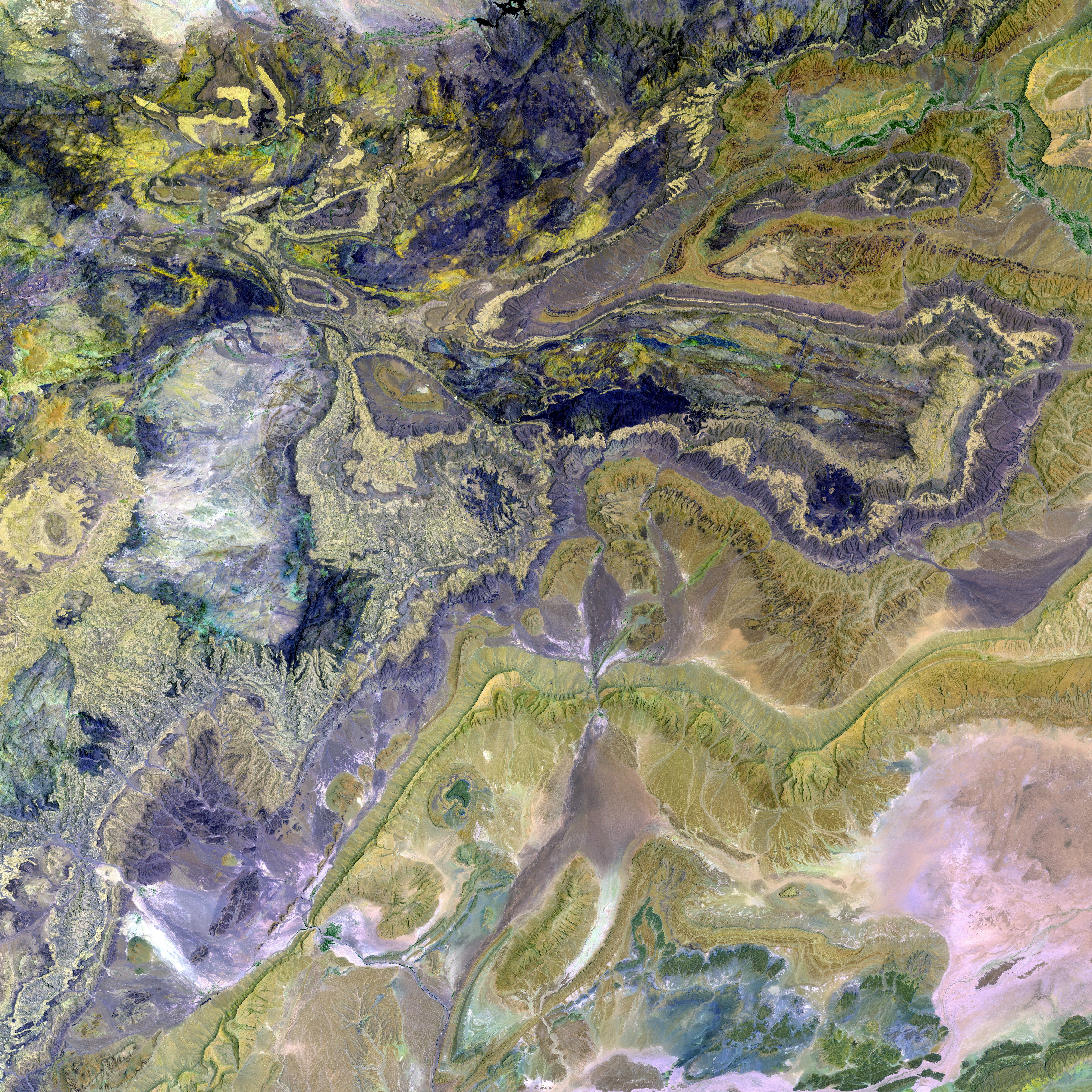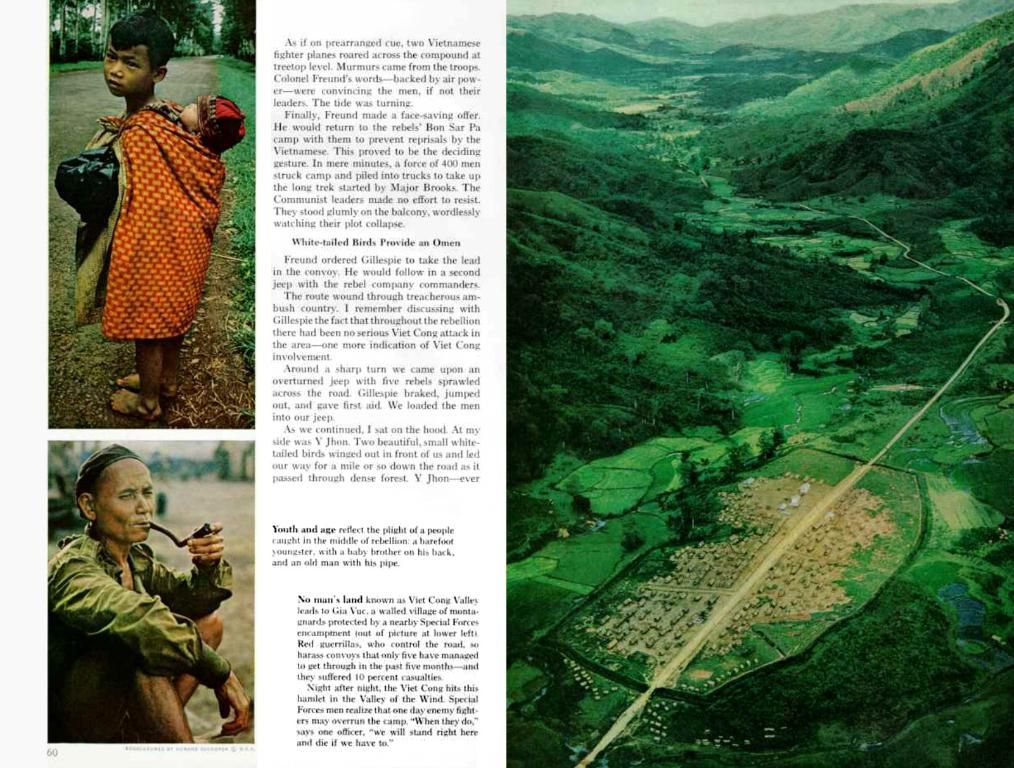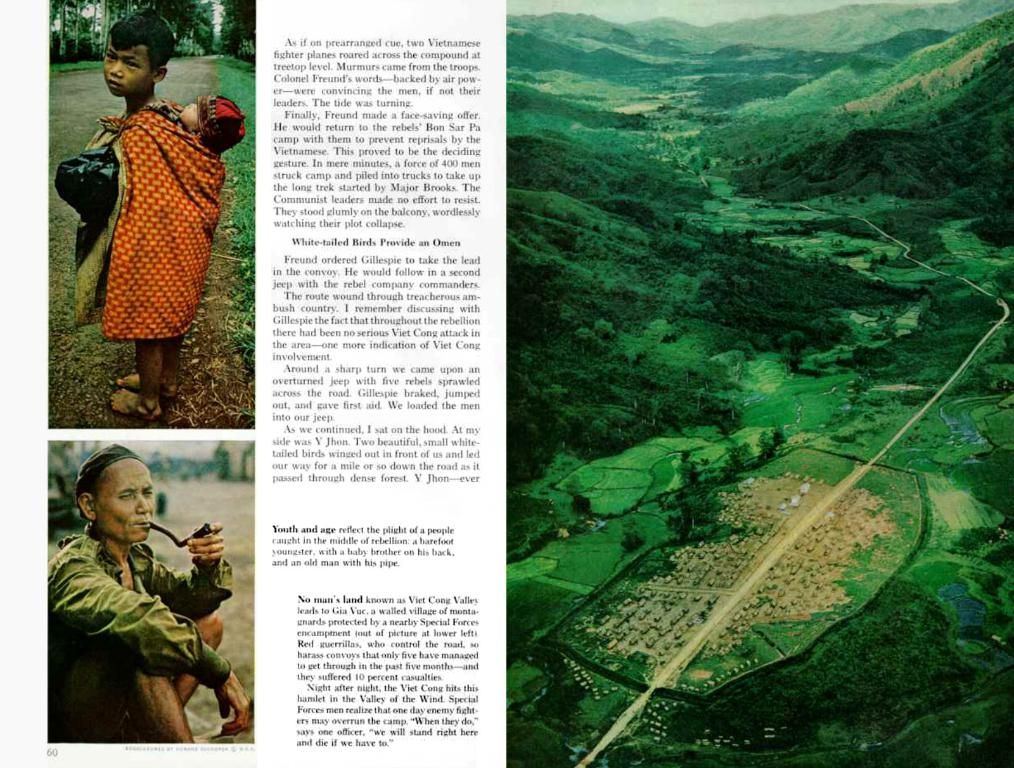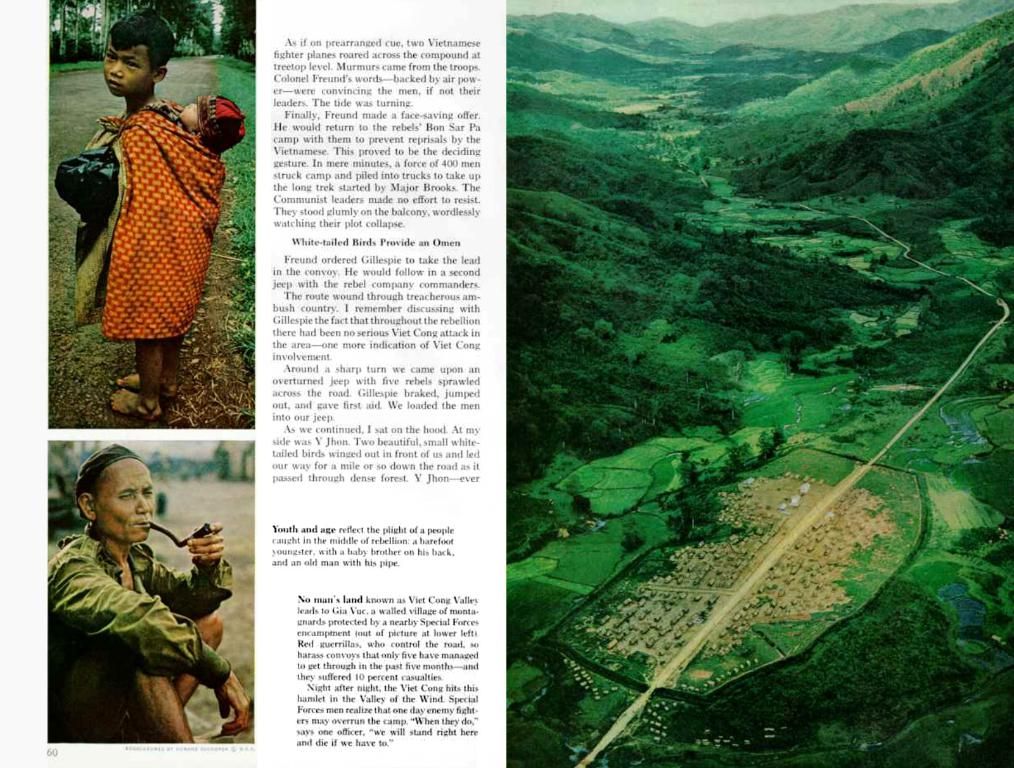Glacier collapse spells crisis: Switzerland's predicament deteriorates
In Switzerland's Lötschental valley, a catastrophic glacier collapse has endangered nearby communities. On Wednesday, a monumental avalanche of rock and ice disintegrated from the Kleine Nesthorn mountain, tumbling into the valley and forming a formidable debris pile[1]. This avalanche blocked the Lonza river, causing the formation of a lake upstream, with the water level sometimes rising as much as three meters per hour[2]. Despite the floodwaters having slowed down by evening, officials expect the lake to overflow by morning, posing a potentially disastrous flood risk for downstream towns.
At a press conference in Ferden, Christian Studer of the Natural Hazards Service warned of the approaching flood wave, stating, "The goal is to anticipate this process as best possible and to ensure the safety of the population further down"[3]. Specialists are working tirelessly with experience and computer models to predict future events and mitigate the impact. However, they caution that a sudden rupture through a canyon in the debris pile or a swift flood wave could still not be entirely ruled out[2].
In addition to the flooding concerns, the situation on the mountain remains precarious. The Kleine Nesthorn still holds hundreds of thousands of cubic meters of unstable rock, whose potential collapse onto the Birsch glacier may lead to further rockfalls and debris avalanches[2]. Due to the ice present within the debris pile, water pockets could form, making it too dangerous for army clearance teams to enter the area[2].
The village of Blatten, the last settlement in the Lötschental valley, has primarily taken the brunt of this disaster, with approximately 90% being engulfed by mud and debris[2][3]. Most of the villagers were evacuated prior to the collapse, but one local resident is still missing[4]. The nearby hamlet of Ried also suffered damage, with resident Daniel Ritler reporting that "In a few seconds, the whole home was destroyed"[4]. Tragically, Ritler could not find his farm and house in post-disaster images.
While directly attributing a single event to climate change can be difficult, there is evidence that global warming may have contributed to the fragile state of glaciers in the region. As temperatures rise, glacier melt and rapid snowmelt may lead to further ice collapse incidents, as well as significant water and wind erosion to the rock[1].
The Swiss government is providing assistance to those affected, and long-term planning for managing glacier instability is crucial to prevent similar disasters in the future[4]. As the situation unfolds, authorities will continue to assess and mitigate the risks posed by the unstable debris pile and incoming water.
- In the context of the unstable debris pile and potential for further ice collapses, a focus on climate change and its impact on glacier health-and-wellness becomes critical, as global warming may have contributed to the fragile state of glaciers in the region, increasing the risk of future ice collapse incidents.
- Considering the precarious situation on the Kleine Nesthorn, with hundreds of thousands of cubic meters of unstable rock, and the potential for future rockfalls and debris avalanches due to the ice present within the debris pile, it is essential to develop advanced science-based solutions for mitigating climate change and ensuring the long-term safety of communities in environments where health-and-wellness is threatened by climate change and glacier instability.




